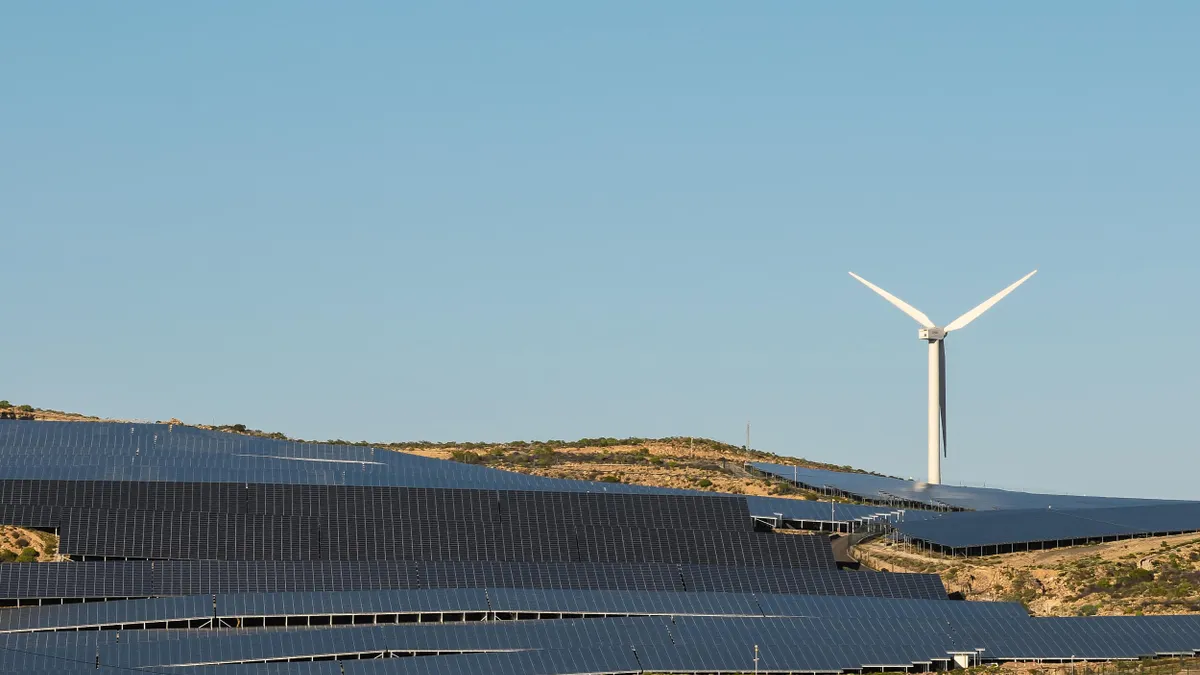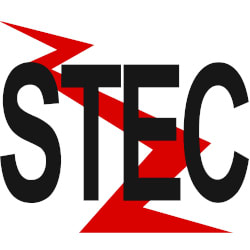The following is a viewpoint from Mike O’Boyle, Energy Innovation's power sector transformation expert.
The Department of Energy’s (DOE) report on baseload retirements impacts on the U.S. grid never delivered the anticipated controversy. Whether due to concerted “prebuttal” advocacy, a strategic July leak at DOE, or internal integrity at DOE, words like “reasonable” and “adequate” now permeate post-release analyses. Indeed, the report largely embraces best-available analyses from national labs and independent experts, supporting the consensus view that America’s changing power mix, particularly the shift to variable renewables, does not threaten reliability.
Nevertheless, as Harvard Law School senior electricity fellow Ari Peskoe notes, DOE’s report represents a missed opportunity. Though the report’s conclusions are reasonable, and don’t represent major deviations from the leaked draft, it fails to recommend policy changes or refocus resources on key issues that provide forward-looking solutions for the coming energy transition. Instead it essentially looks backward, pivoting from reliability to resilience, rather than focusing on what the grid needs most – flexibility.
It turns out these words matter, a lot.
What is resilience, anyway?
DOE’s report focuses on a need to study and value resilience attributes provided by baseload coal and nuclear units, but fails to add sophistication to the concept. The report starts from the NERC definition:
“Infrastructure resilience is the ability to reduce the magnitude and/or duration of disruptive events. The effectiveness of a resilient infrastructure or enterprise depends upon its ability to anticipate, absorb, adapt to, and/or rapidly recover from a potentially disruptive event.”
This is a fine explanation, but dig deeper and it turns out our collective understanding of how resilience should be measured is relatively shallow. A recent Sandia National Labs report – mentioned in passing in the DOE staff report – outlines a framework for deriving meaningful resilience metrics, while admitting they require development. That’s why a principal recommendation from DOE’s report is to do “more research,” on system resilience and how to value it.
Nevertheless, the report jumps to an anecdotal conclusion:
“Given the many problems that can affect different generation and fuel types, system-wide reliability and resilience can be supported by a diverse portfolio of generation resources that limit over-dependence on any single fuel or technology type, plus demand-side resources that reduce overall demand and better protect customers in the event of a widespread extreme event.”
This is a fair statement on its face, but in context, it reads as a defense of the status-quo. The rise of natural gas and renewables and the fall of coal mean fuel diversity has never been greater. Since DOE’s report finds cheap gas is the main culprit forcing coal and nuclear off the system, “fuel diversity” can be read as an imperative to keep coal and nuclear online.
However, the resilience benefits of a baseload and fuel-based system versus one that relies more on variable renewables is arguable. The report admits that coal piles froze during the 2014 Polar Vortex, as gas prices spiked and ultimately become undeliverable in many areas (even though the lights stayed on). Meanwhile, wind and demand response performed admirably.
Furthermore, the resiliency envisioned by DOE’s report via fuel diversity and deliverability misses the point – customer outages are overwhelmingly caused by distribution system and transmission system failures, not resource availability. A 2012 Brattle Group report prepared for the Electric Reliability Council of Texas (ERCOT) found, “increase[ing] resource adequacy may prove to be less cost-effective than investments to improve distribution reliability.” And maintaining baseload’s place in the market with new revenue streams would likely only exacerbate the already significant oversupply facing wholesale markets today.
New York, the state arguably hit hardest by Superstorm Sandy, has doubled down on increasing grid resilience to severe weather in its Reforming the Energy Vision proceeding. In a key order, the New York Public Service Commission identified three following areas for measuring resilience:
- The percentage of customers equipped to maintain islanded service during a prolonged widespread outage
- Improved utility response capabilities in the sense of system visibility and remote outage management
- Outages at critical facilities and vulnerable circuits
Notably missing from New York’s recommendations is any emphasis on fuel diversity or deliverability. Instead, those concerned with increasingly severe weather events have honed in on reducing carbon emissions, hardening and modernizing the distribution system, and increasing system flexibility as the most desirable solution set.
The DOE report’s shift in focus from reliability to bulk-system resilience is a subtle but important distinction because of the solution set it yields federal policymakers. Combined with Secretary Perry’s memo and cover letter, this shift can be fairly read as a covert defense of two technologies that are dying because of economics – coal and nuclear. Though an overreliance on natural gas presents undeniable risks to reliability, a myopic focus on rewarding fuel availability fails to answer the power system’s most pertinent question: “What changes are needed given the policy, economic, and technological changes sweeping the grid today?”
Valuing flexibility
System flexibility actually addresses the potential hurdles facing a power system in rapid transition away from baseload generation toward more variable, inverter-based generators. Flexibility can be defined as the ability to shift demand or supply quickly in reaction to system needs, along different timescales, as recently described in a Climate Policy Initiative report. It’s a crucial system attribute to take advantage of the cost declines, policy appeal, and scalability of wind and solar resources.
The report does recommend addressing flexibility in the following recommendation:
“Focus R&D on improving VRE integration through grid modernization technologies that can increase grid operational flexibility and reliability through a variety of innovations in sensors and controls, storage technology, grid integration, and advanced power electronics. The Grid Modernization Initiative should also consider additional applications of high-performance computing for grid modeling to advance grid resilience.”
But technological barriers are not the issue to maintaining reliability as we shift away from baseload generation. The NOAA study of 80 percent carbon reduction in the U.S. grid by 2030 showed we can balance supply and demand in five-minute increments with over 50 percent wind and solar at the same cost as today’s power system, while reducing our reliance on natural gas. NREL’s Renewable Electricity Futures Study similarly found the system was affordable and reliable with 80 percent renewable generation. Neither study assumes batteries, thermal storage, demand response, or other new technologies as significant sources of flexibility, as well as resilience.
We also know that wind, solar, and batteries can already provide essential reliability services (ERS) like voltage stability, inertia, and frequency response. NREL showed that wind and solar can provide frequency regulation, when available. Advanced inverters are able to provide significant voltage support, and standards are under development. Batteries and grid-connected devices like water heaters with smart inverters present a huge untapped resource that can fix short-term imbalances between supply and demand virtually instantaneously. And retired plants can often be converted to synchronous condensers.
In other words, we already have many of the pieces and plenty of run-time to figure out where missing ERS will come from. The DOE report is right on that we must figure out how to value these services, rather than assuming they will be available as they have been with a baseload-heavy system.
The tremendous institutional barriers to valuing flexibility are more significant, both at the wholesale market level and in utility regulation. While DOE’s report focuses on reforming wholesale markets to value reliability and resilience, flexibility is mostly left out of the solutions mix. Likewise, utility incentives to maintain their baseload plants and build physical assets rather than maximizing cost-effective demand-side resources also remain unaddressed (though Lawrence Berkeley National Lab is on the case). These are the key focus areas where DOE missed a chance to shine the spotlight while everyone was watching.
Where to go from here
The findings of the DOE report shows there is no reliability crisis. DOE was wise to incorporate the brilliant work at the national labs in its assessment, but it hid those findings behind off-center defenses of the status quo. As far as providing ground for future work, policy, and research, it largely landed with a thud.
Insofar as we need to focus on the impacts of severe weather events on system reliability, grid modernization and distribution system hardening hold far more potential for reducing customer outages than ensuring fuel deliverability. The need to reform wholesale markets is real, but such reforms should focus on valuing flexibility and expanding access to non-traditional low-carbon resources like storage, demand-response, distributed generation, solar, and wind. Institutional barriers far outweigh the technological ones.
DOE has already led the country and the world with cutting-edge research that shows we can manage the energy transition affordably and reliably. It’s time for Secretary Perry to lead by following his department’s advice





















